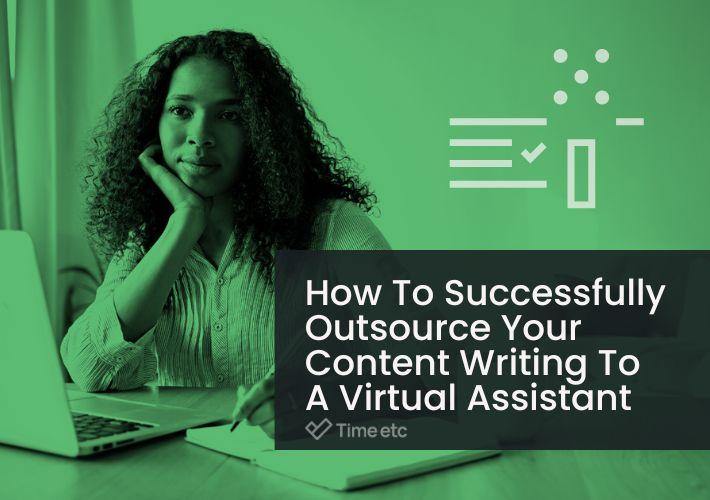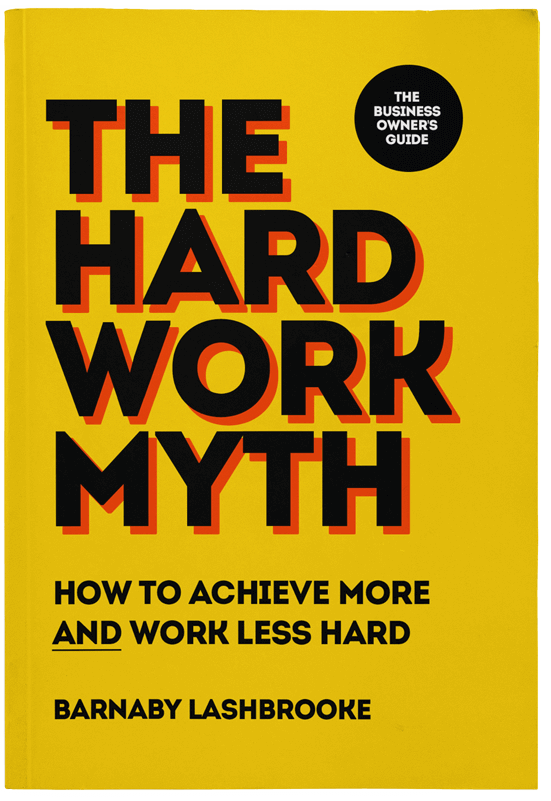Businesses invest heavily in content marketing for one simple reason: it works. Content marketing is around 33% more effective at generating leads than outbound marketing, and costs around 62% less.
There is no denying that content marketing is a powerful tool for businesses, but the key to a successful strategy lies in consistent, high-quality output. But according to recent reports, the average time business owners spend producing blog posts, social media posts, white papers, and emails is 44 hours per month, the equivalent of around one full working day per week dedicated solely to writing content (if you factor in the time spent planning content and reporting on results, this jumps to 68 hours per month, around 43% of their total work time).
When business owners have to wear so many different hats and juggle a long list of responsibilities, many find themselves in a position where spending time on maintaining a consistent content schedule feels like a luxury they can rarely afford. Do you put it on the back burner and risk losing out on the results? Or do you invest the time and leave yourself with less to spend on more impactful tasks that’ll help to grow your business?
The most ideal solution is, of course, neither. Outsourcing your writing tasks allows you to reinvest that time and energy and focus on your goals. With the help of a virtual assistant (VA), you can tap into a steady supply of fresh, well-written, and engaging content.
The benefits of hiring virtual assistants (VAs)
As your business grows, you may need an extra set of hands to help manage some of the tasks and responsibilities that come with running it. This is where hiring virtual assistants can be extremely helpful.
You might have heard the term and wondered, “What is a VA? What do they do?"
Virtual assistants, or VAs, are usually self-employed and work as individual contractors, either directly with their own clients or by teaming up with agencies, on a remote basis. They handle the less urgent, often repetitive, but still necessary tasks that would fill your day. From administrative duties and executive tasks all the way to–you guessed it—content creation.
See: 50 Tasks You Can Outsource To A Virtual Assistant To Save Time In Your Business
There are many benefits of outsourcing for small businesses, not the least of which is significant savings on staffing costs. For an experienced candidate, business owners could save as much as 90% on the costs of recruitment, salary, benefits, office supplies, and equipment for a full-time, in-house hire. So not only does outsourcing day-to-day tasks give business owners more time to focus on their core competencies, but more money in their back pockets, too.
And aside from the cost, hiring a full-time employee is a big commitment. Another advantage to hiring VAs is that their services are typically available through monthly packages or subscriptions, which are set up based on your specific requirements. If you ever go through a particularly busy or quiet period, you have the option to easily scale your plan up or down to match your needs.
Now that you know the benefits of working with a virtual assistant, what’s next?
To maximize your success in delegating content-writing tasks, follow these steps:
Before: Prepare the groundwork
If you've been responsible for your content output from day one as the head of your business, there's a chance that most of your strategy comes from your gut instincts. You know your business like the back of your hand, and chances are you have a natural feel for how you want your content to be, and what works and what doesn't. But if your writing tasks are about to transfer to someone else’s hands, this knowledge can’t just stay in your head…
Create a style guide
Trust is essential for any business to succeed, and in order to be trusted, you need to be seen as reliable and consistent. Your readers will be able to discern this through the content you produce, including the words used, images chosen, and overall tone of voice. When outsourcing to an external professional like a virtual assistant, it can be tempting to just let them “get on with it” with little or no direction. You trust their skills and experience and want to take advantage of your reclaimed time as soon as possible. While it is highly likely that a virtual assistant will produce the content to a high standard, it is extremely unlikely that it would blend seamlessly with the previous content written by you.
Creating a style guide–also known as brand guidelines–to share with your assistant will give them a better understanding of your brand and help them to make sure their writing is consistent with your style.
Useful things to cover in your guide could include:
- Vocabulary - Different industries and organizations often have their own unique terminology. If applicable, it’s worth identifying those terms, providing a clear definition, and explaining when and how to use them. If any special formatting should be used (such as capitalization or italics), be sure to include it.
- Tone of voice - “It’s not what you say, it’s how you say it.” Think of it as your business’s personality when it’s conveying its messages.
- Style and formatting - If you have any preferences regarding punctuation, numbers (e.g. one or 1? Twenty or 20?), contractions, capitalization, when words should be in bold or italicized, bullet lists, formatting of time and dates, and so on.
- Best practices - Any other “house rules” you’d like your assistant to follow.
Write a content brief
If your style guide is the “how” your content should be written, a content brief lets your assistant know the “what” and the “why”.
Once you’ve established the type of content you would like to outsource, it’s time to get down to the nitty-gritty.
Briefs are typically used for content such as articles and blog posts, but it’s good practice to provide plenty of detail for any and all types of content-writing tasks you delegate to your VA.
- A short description of the content and its purpose (For example, is it social media copy to promote your products or brand? Is it a blog post to inform or educate on a particular topic?)
- Your target audience
- Suggested titles, headings, and subheadings
- Word count
- Keywords, if applicable
- Structure guidelines
- Calls-to-action guidelines
Provide clear instructions and expectations
Style guides and briefs aside, another crucial element needed to successfully outsource to a VA is to always make sure they have everything they need when it comes to completing your tasks.
- The website or program they should use
- Log-in details or credentials they may need
- Step-by-step instructions on how to schedule or publish your content (regardless of how simple or straightforward the task may be to you, include every single action they will need to take)
- Deadline for completion/frequency of recurring task
- Contact details for any individual who should be contacted before, during, or after completion, if applicable
These instructions should be easy to follow but still provide all of the necessary information. Even though virtual assistants typically have plenty of professional experience, it's always best to err on side of being over-prepared rather than under. This will save you both time in the long run.
After: Be available
One of the most important things to remember when working with a virtual assistant is that open lines of communication are key. In the early days, you can expect that your virtual assistant will need to ask you many questions and double-check details to ensure they’re on the right track. And no matter how well-prepared we are, things can always come up that are not covered in any sort of guide or instruction, so it's vital to be available and ready to provide support and clarification as needed.
Many people struggle with this step as it can be difficult to put into practice when you’re already juggling a million other responsibilities, but it is an absolute must if you want to see the best results from your VA experience.
Avoid micromanaging
As business owners, we’re used to the buck starting and stopping with us. When we’ve built our businesses from the ground up, it's only natural that we can struggle to let go of tasks we were once responsible for.
The truth is, the only person who can do things in precisely the exact same way that you would is, well, you. Style guides and content briefs are a great way of maintaining consistency and making sure all output aligns with your business’s purpose, but a degree of flexibility, trust, and open-mindedness is crucial. It may be tempting to keep checking in, asking for updates, and making amendments, but think of the bigger picture. You hired a virtual assistant to help save you time so you can grow your business. Any time you spend on tasks that aren’t the most effective use of your time and energy will only slow your progress toward your goals.
What’s the bottom line?
By delegating your content writing tasks to a professional, you free up valuable time that can be better spent on other aspects of running your business. While it may take some time to get used to the idea of sharing the workload, the long-term benefits are well worth it. Virtual content writers bring a wealth of knowledge and experience to the table, which can help take your business to the next level.
But you don't have to wait until your content marketing strategy is too much to handle before bringing a VA on board. Hiring a VA will help you stay organized and achieve your goals much faster than you could on your own, so why wait?
If you’re ready to do more of the work that matters and reclaim valuable time, speak to our expert team to get started, we’ll set you up with a dedicated professional based on the skills and experience you need.
Or try us out for free today!







